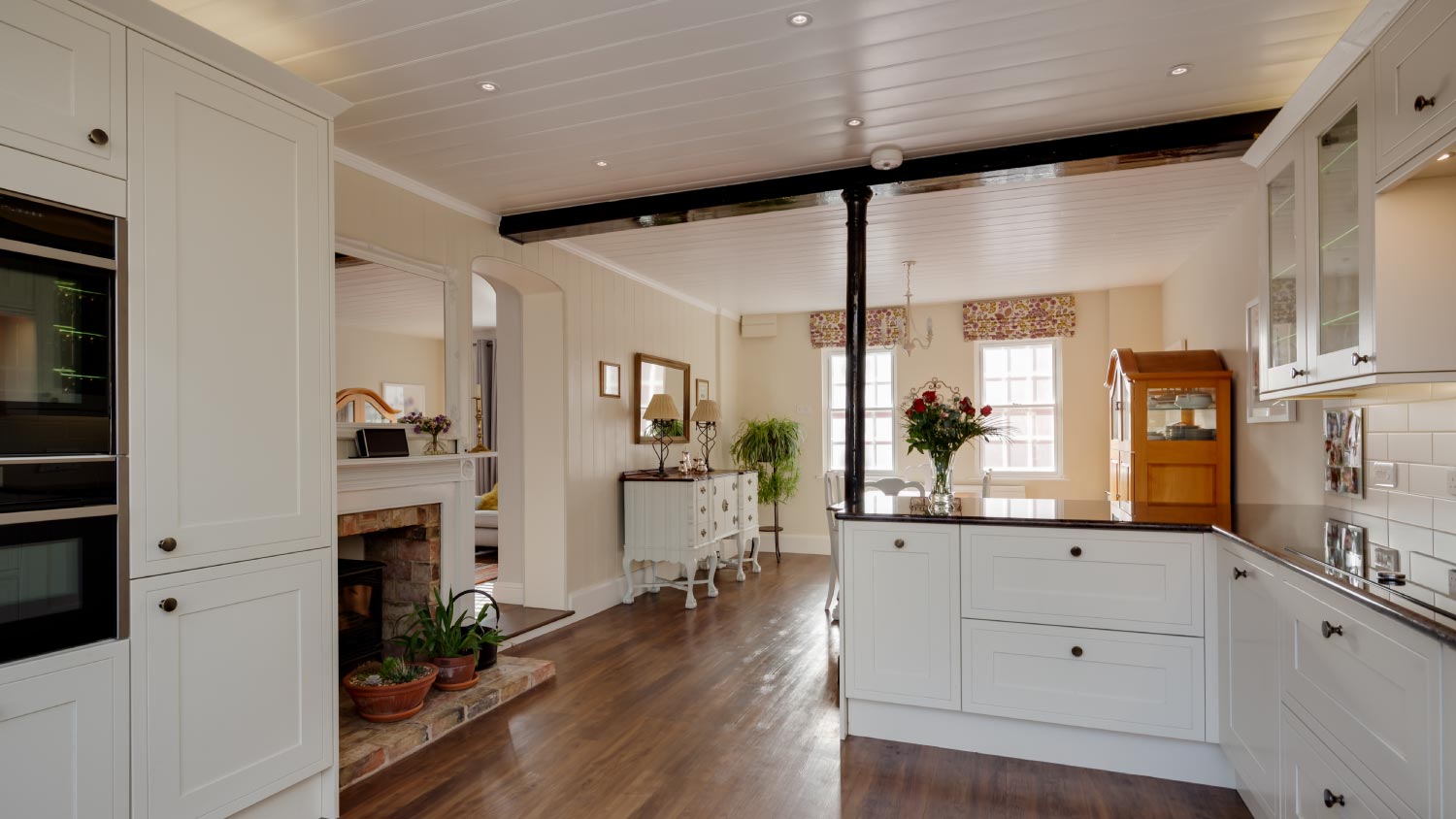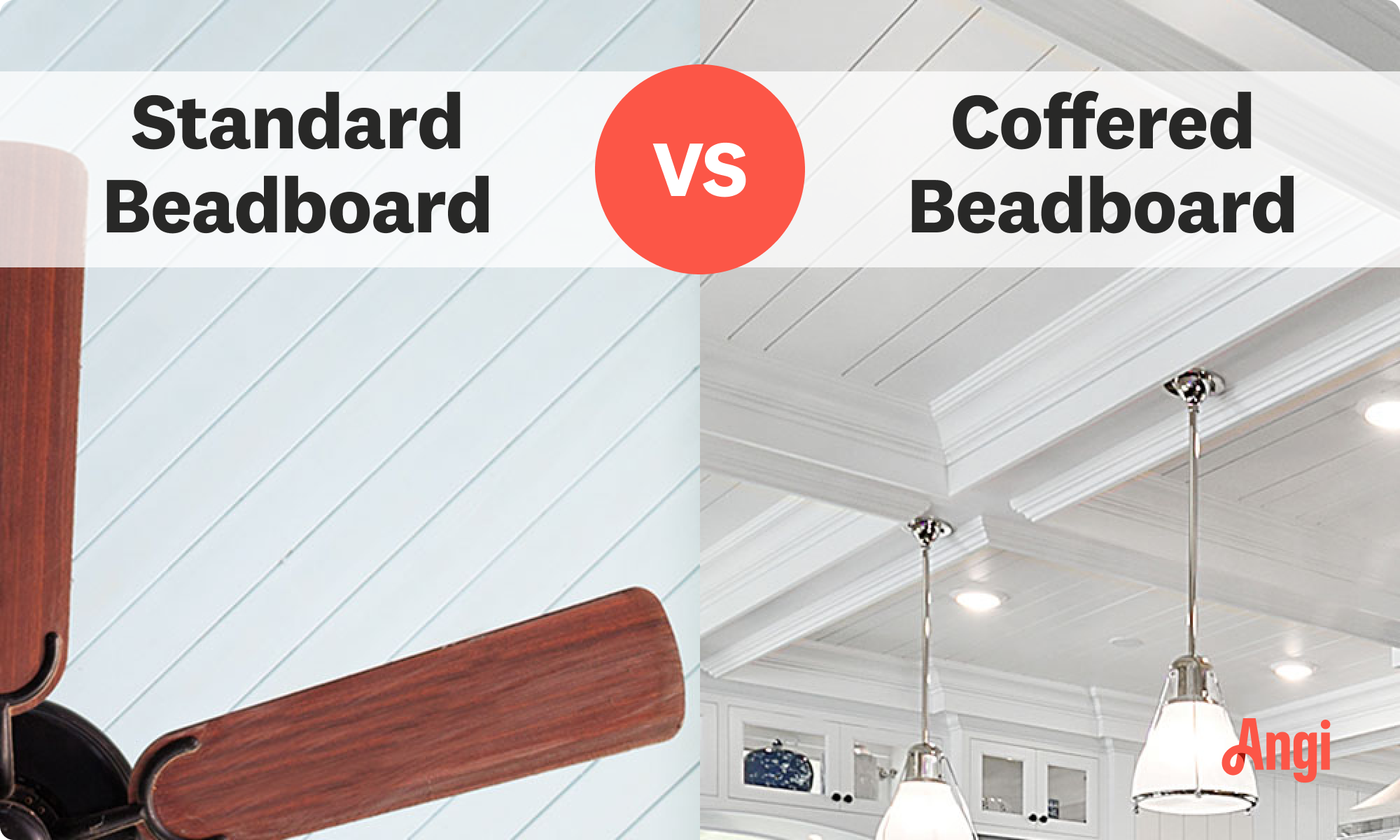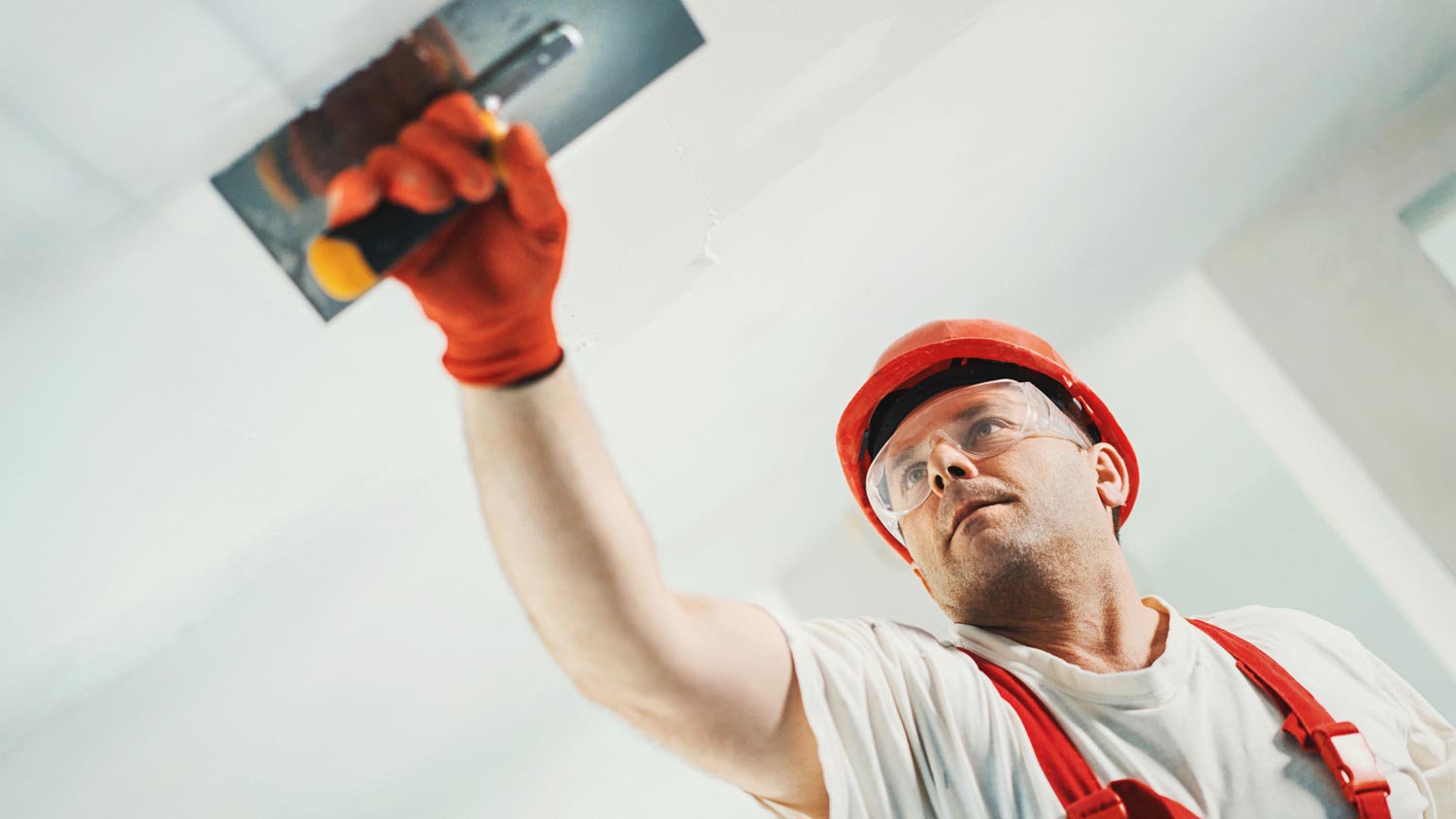How Much Does It Cost to Install a Beadboard Ceiling? [2025 Data]
The cost to install beadboard ceiling runs between $4,600 to $5,800, with an average of $5,100 depending on the size of the room and your pro’s labor fees.


The cost to install beadboard ceiling is $5,100 on average, but can run between $2,000 and $6,800. For those unfamiliar with the term, beadboard is a type of wood paneling—similar to hardwood flooring—that is “hung” on ceilings and walls, adding texture and style to an otherwise flat surface. Beadboard can look beautiful, and while it isn’t the least expensive way to decorate your ceiling, it can be a smart way to cover up outdated styles like popcorn ceilings—as long as they don’t contain asbestos.
Beadboard Ceiling Cost per Square Foot
| Room Type | Ceiling Size in Square Feet | Total Cost |
|---|---|---|
| Bedroom | 100 | $600–$1,100 |
| Primary bedroom | 150 | $900–$1,700 |
| Living room | 300 | $1,800–$3,300 |
| Bathroom | 50 | $400–$900 |
| Basement | 200 | $1,200–$2,200 |
The average cost for professional beadboard installation ranges from $5 to $6 per square foot. In most cases, you can install beadboard directly over existing ceiling styles without needing to remove any of the ceiling’s applied texture. The cost per room varies based on size but unless the ceilings are much higher in one room versus another, the cost per square foot should be the same.
If you choose to remove any existing texture, expect to pay an additional $1.30 to $2.50 per square foot, plus an additional $3 to $7 per square foot if your popcorn ceiling contains asbestos. If you have a popcorn ceiling that is completely free of asbestos and you choose to DIY your beadboard installation, expect to pay $2 to $4.20 per square foot for the cost of vinyl or MDF beadboard materials.
Beadboard Ceiling Cost by Material
The type of beadboard you choose depends largely on your budget and your desired aesthetic. Wooden designs are a classic interior choice, but they can also cause the appearance of a lower ceiling, whereas vinyl or MDF beadboard is less expensive and can be painted over easily. A white ceiling can give the illusion of more headspace.
| Material | Description | Average Cost per Square Foot |
|---|---|---|
| Vinyl | Low maintenance, resistant to mold and mildew | $2–$5 |
| Raised panel unfinished oak, maple, or cherry | Less costly than stained options, durable | $12–$13.50 |
| Raised panel stained oak, maple, or cherry | More customization choices | $30–$40 |
| Other unfinished wood | Less costly than other wood options, can be painted over | $12–$13.50 |
| Pine tongue and groove | Adds warmth and character | $3–$9 |
| MDF | Durable, smooth finish | $1–$5 |
Beadboard Ceiling Framing Cost

| Room Size | Cost of Framing |
|---|---|
| 100 | $125–$200 |
| 150 | $190–$290 |
| 200 | $250–$400 |
| 250 | $300–$480 |
| 300 | $370–$600 |
You can add a framing style to your beadboard ceilings that breaks it up into tiles. This is called coffering, and it is very popular in rooms that usually contain other decorative elements, such as bedrooms or living rooms. It is less common in rooms like bathrooms, utility rooms, or basements, where the visual interest goes unnoticed.
Coffering a beadboard ceiling requires some planks, nails, and paint. These planks are applied in rectangles or squares, and beadboard is laid within those recessed shapes. This can add an interesting depth to an otherwise flat beadboard ceiling. The framing is not expensive unless it is finished wood, but even then you should expect to pay between $80 and $600 to install coffered framing, depending on the type of wood used.
Ceiling Contractor Costs
If hiring a professional to install a beadboard ceiling, you will pay $1 to $3.50 per square foot to cover the cost of labor. However, contractors will also charge for the removal of debris, sourcing and picking up materials, using their tools and ladders, and developing a plan for your home. If they need to remove existing ceilings like popcorn ceilings, this adds to the cost. If they charge a project-based fee, expect to pay 10% to 25% of the project cost based on factors like ceiling height and demand in the local market.
However, popcorn texture does not have to be removed from the ceiling to cover it with beadboard. But if you do want the ceiling texture—any texture—professionally removed prior to beadboard installation, you will pay an average of $1.30 to $2.50 per square foot for a local popcorn ceiling removal service.
Beadboard Ceiling Cost by Location
Every city is different and will have different markets for both materials and labor. City centers in high-cost-of-living areas will command the highest prices, while suburban areas are the most affordable. As long as there are more than a few professionals working in one area, there should be consistency across the pricing offered.
| Location of Installation | Total Cost |
|---|---|
| Boise, ID | $4,150–$5,810 |
| Burlington, VT | $3,930–$5,430 |
| Chattanooga, TN | $3,970–$5,500 |
| Chicago, IL | $4,410–$6,260 |
| El Paso, TX | $4,120–$5,750 |
| Juneau, AK | $4,75–$6,830 |
| Honolulu, HI | $4,880–$7,060 |
| Minneapolis, MN | $4,300–$6,060 |
| San Francisco, CA | $4,590–$6,570 |
| Scranton, PA | $4,290–$6,170 |
Installing a Beadboard Ceiling Yourself vs. Hiring a Pro
If there is no asbestos in the popcorn ceiling and you want to try your hand at a beadboard install, you can certainly give it your best shot. However, we don’t recommend this for a few reasons. Firstly and mainly, there is the asbestos issue—if either you or your contractor discovers asbestos in your ceiling, you need to hire a professional to remove it due to safety concerns.
There is also the concern with working high up on ladders for extended periods of time wielding heavy tools and attempting to navigate awkward beadboard pieces. Honestly, there are far better DIY jobs you can do where you can make a bigger impact, learn more, and save more in labor costs. While hiring a pro will certainly increase the project cost, it’ll free up your own time, and you’ll know that the job will be done correctly.
Tips to Reduce Cost While Installing a Beadboard Ceiling
Reducing cost will depend largely on two things—whether you DIY the job or hire a pro, and what material you use. You can save some money on paint if you choose to paint the beadboard yourself rather than buy it prefinished, or if you are doing a large project and able to negotiate a bulk discount.
If you find a contractor who will install raw beadboard, you can finish it yourself. This gives you the opportunity to try your hand at a new technique and allow you greater control of the finished design.
Do Beadboard Ceilings Increase Home Value?
You can recoup much of what you spend on beadboard ceilings, especially when installed as a DIY project. But beadboard ceilings won’t directly increase a home’s value. They will, however, likely make a difference to buyers by increasing the home’s visual appeal.
There are plenty of projects that offer significant return on investment (ROI), so interested homeowners should think of beadboard ceilings as a way to increase the aesthetics of the space and less on the monetary reward.
How Angi Gets Its Cost Data
Home is the most important place on earth, which is why Angi has helped more than 150 million homeowners transform their houses into homes they adore. To help homeowners with their next project, Angi provides readers with the most accurate cost data and upholds strict editorial standards. We extensively research project costs to develop the pricing data you see, so you can make the best decisions for you and your home. We rely on reputable sources, including the U.S. Bureau of Labor Statistics, academic journals, market studies, and interviews with industry experts—all to ensure our prices reflect real-world projects.
Want to help us improve our cost data? Send us a recent project quote to costquotes@angi.com. Quotes and personal information will not be shared publicly.
Frequently Asked Questions
Beadboard is a decorative element and lacks the structural integrity of drywall. It cannot hold much weight and is not meant to be used as an insulator or moisture barrier, like drywall is. In almost all cases, beadboard is placed over an existing wall surface which, in modern days, is usually drywall, but decades ago could have been wood paneling.
The differences are subtle, so it is understandable to wonder what the difference is between these two types of paneling. Shiplap is a wall panel with a groove at the top and bottom of each panel. The panels latch together, creating a waterproof paneling that was originally used for ships. Beadboard is a type of wainscoting that is usually used on the lower portion of a wall, but can be installed on ceilings.
Beadboard is not outdated and can be seen in many homes throughout the country. It is a classic design element that, while seen more commonly in cottage-style homes, is a relatively inexpensive way to add an immense amount of character to a room. If you have popcorn ceilings or flat drywall, consider either adding a full beadboard ceiling or installing coffered framing over your existing ceiling texture.















